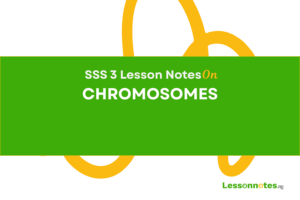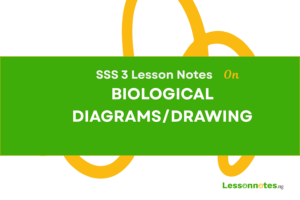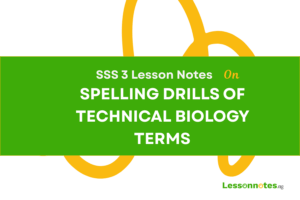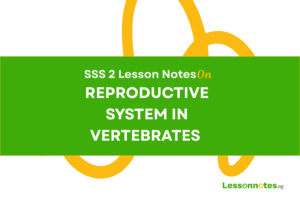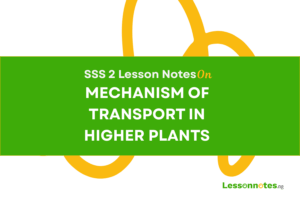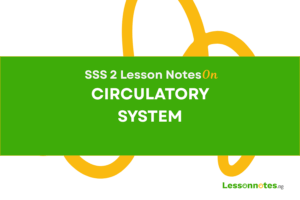Basic Ecological Concepts SS1 Biology Lesson Note
Download Lesson NoteTopic: Basic Ecological Concepts

DEFINITION OF ECOLOGY
Ecology is the study of plants and animals (as well as microorganisms) about their environment. As a practical science, ecological studies involve:-
- Studying the distribution of living organisms
- Finding out how living organisms depend on themselves and their non-living environment for survival.
- Measuring factors affecting the environment.
BRANCHES OF ECOLOGY
Depending on whether the organisms are studied alone or in groups, ecology is divided into two:
- AUTECOLOGY: This is the study of an individual organism or a single species of organism and its environment e.g. the study of a student and his school environment.
- SYNECOLOGY: This involves studying the inter-relationships between groups of organisms or different species of organisms living together in an area e.g. study of fish, crabs, seaweeds, etc in a pond.
ECOLOGICAL TERMS
The various concepts closely associated with ecology include;
1.ENVIRONMENT
This includes external and internal factors, living or nonliving which affect an organism or a group of organisms. These include the habitat (with its peculiar physical conditions e.g. light, food, water, air), the animals preying on other animals or the diseases affecting the organisms.
- BIOSPHERE (ECOSPHERE)
This is the zone of the earth occupied by living organisms to carry out their biochemical activities.
The ecosphere consists of 3 major portions:-
- Lithosphere:- this is the solid portion (the outer-most zone) of the earth which is made up of rocks and minerals. This zone forms 30% of the earth’s surface and it is the basis of human settlement.
- Hydrosphere:- this is the liquid (aquatic) part of the biosphere. It covers about 70% of the earth’s crust. It consists of water in various forms; solid, liquid or gas (water vapour), hydrosphere includes lakes, pools, springs, oceans, ponds, rivers, etc.
- Atmosphere: – this is the gaseous portion of the earth. It consists of three main gases; nitrogen (78%), oxygen (21%) and carbon (iv) oxide (0.03%). There are also 0.77% rare gases.
- HABITAT
This is a place where an organism is naturally found. Habitat is always affected by environmental factors. Habitat can be divided into three:-
- Aquatic habitat: this is where plants and animals (as well as microorganisms) live in water e.g. Sea, ocean, lagoons, streams, etc.
- Terrestrial habitat: this is where the organisms live on land e.g. forests, grassland, (savanna), desert etc.
- Arboreal habitat: These include tree trunks and tree tops where some organisms (usually animals) are naturally found.
4. ECOLOGICAL NICHE
This refers to the habitat and the entire habit (behavioral, feeding, breeding) of an organism. It is the physical space occupied by an organism and its functional role in the community.
5.POPULATION
This is the total number of organisms of the same species living together in a habitat e.g. population of cockroaches in the Biology laboratory.
6.COMMUNITY
This is made up of all the populations of living organisms that exist together in a habitat e.g. a community of decomposers, insects and birds on a decaying log of wood.
7.ECOLOGICAL SYSTEM (ECOSYSTEM)
This refers to the basic functional unit in nature, which consists of all living factors and their interaction with non-living factors of the environment. An ecosystem can be natural or artificial.
8.BIOMES
This is a large natural terrestrial ecosystem. It is a plant and animal community produced and maintained by the climate.
COMPONENTS OF AN ECOSYSTEM
The biosphere comprises various ecosystems. There are two main components of the ecosystem, the abiotic and the biotic components.
1. ABIOTIC COMPONENTS
These are non-living components and they are basic elements and compounds of the environment in which an organism lives.
Abiotic components include organic substances (e.g. carbohydrates, lipids, and proteins), inorganic substances (e.g. CO2, H2O), climatic factors (e.g. light, temperature, rainfall) as well as edaphic factors (e.g. soil types, texture, topography etc).
- BIOTIC COMPONENTS
These are the living things in the ecosystem. These include the producers, the consumers and the decomposers.
Producer: These are autotrophs in that they synthesize their food from simple inorganic substances e. g. green plants, protophytes and chemosynthetic bacteria.
Consumers: These are heterotrophs which feed on the producers or one another. They may be primary, secondary or tertiary consumers e.g. non-green plants, animal protozoa and some bacteria
Decomposers: These are saprophytes. They break down the remains of plants and animals and release usable nutrients into the soil. These nutrients are used by plants to make food e.g. fungi and some bacteria.
Generally living things influence other living things in many ways such as in feeding (parasitism), shading from sunlight, pollination and dispersal of seeds, and competition. Some of these factors are favorable while others are unfavorable.
ASSIGNMENT
- Which of the following is not classified as a terrestrial habitat? A. forest B. guinea savanna C. literal zone D. desert
- The activities of an organism which affect the survival of another organism in a habitat can be described as A. biotic factors. B. Abiotic factors C. climatic factors D. edaphic factors.
- The number of individuals of the same species interacting in a habitat at a particular time is best described as A. community B. ecosystem C. population D. biome.
- A biotic community with its physical environment (abiotic factors) defines A. ecosystem B. population C. habitat D. biosphere.
- The most abundant gas in the atmosphere is A. oxygen B. nitrogen C. carbon dioxide D. a rare gas.
- Define i) Biotic community ii) habitat iii) an ecosystem
- Write short notes on the three major portions of the ecosphere.


